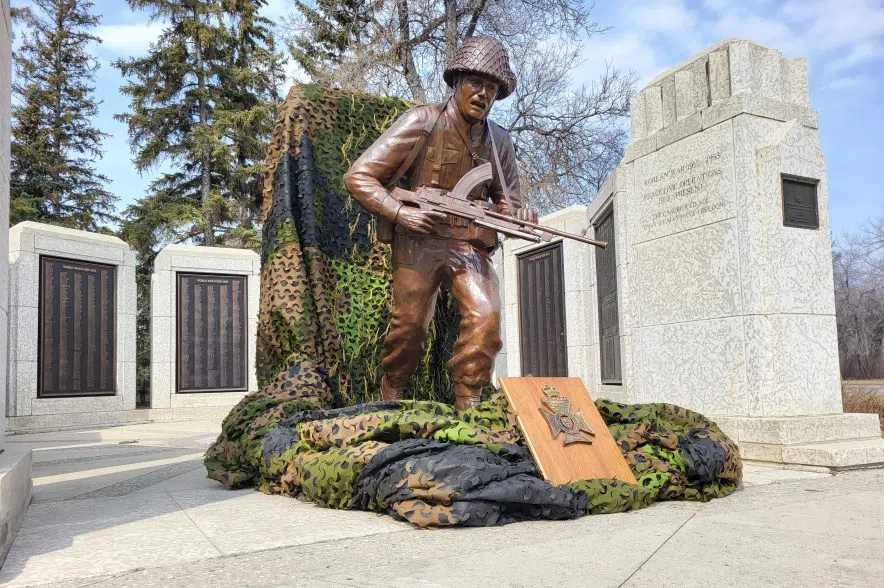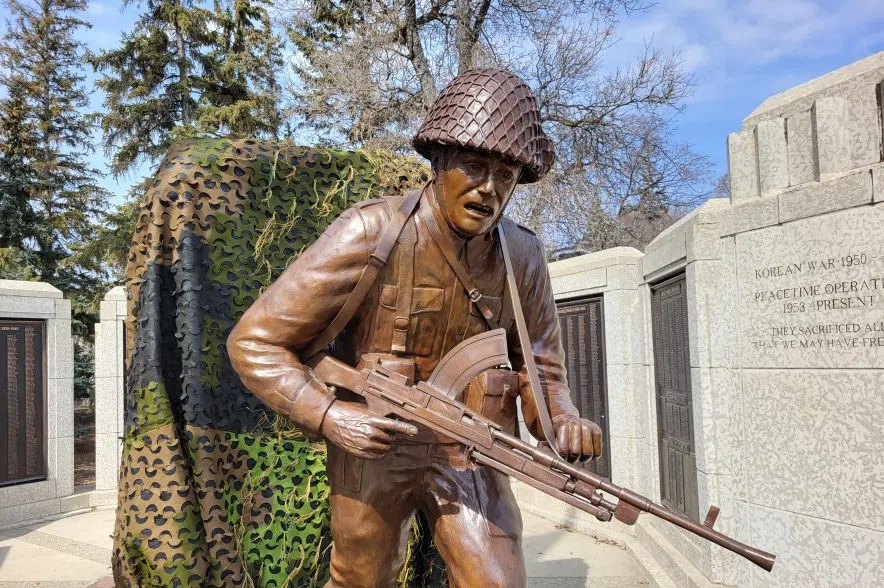An eight-foot-tall bronze rifleman stood glistening in the sun on Saturday outside the Saskatchewan Legislature.
Its final stop will be on the beaches of Normandy, but on Saturday it was in Regina.
It was created in honour of the Royal Regina Rifles (formerly the Regina Rifle Regiment), who played a key role in the liberation of France from the Nazis during the Second World War.
Hundreds gathered for a public event allowing for a sneak peek of the statue before it gets officially unveiled at Juno Beach for the 80th anniversary of D-Day in June.
“It’s a real sense of pride,” retired lieutenant-colonel Ed Staniowski told reporters.
Both of Staniowski’s parents fought in the Second World War and immigrated to Canada from Europe afterwards.
“We all consider ourselves natives of Saskatchewan and it’s a real thrill for me to be able to see that the legacy of this great regiment is continuing,” he said.
The Rifles distinguished themselves on the battlefield by advancing farther in the first 24 hours of D-Day than any other unit from any other country.
They were able to make it 10 kilometres inland and defended their position from a vicious Nazi counterattack.
Staniowski was able to follow the statue from conception to its realization.
“When you see it for real – the size of it, the intensity of it – it’s very moving. It’s something that has stuck with me,” he said.
Sculptor Don Begg said the statue was designed to be noticeable from a distance. (Daniel Reech/980 CJME)
The rifleman’s face captures a sense of fear and anxiety but also determination as he charges into battle.
Sculptor Don Begg says it was a great honour to be asked to make the statue. He said it was designed to make a striking impression even from a distance.
“It was a great project to work on and if it wasn’t for the soldiers that went there to sacrifice and do what they did, we wouldn’t have the life we do have now,” Begg said.
Begg said it would be an honour for people to use his statue as a historical reference – especially given the amount of detail that went into the soldier’s clothing.
“When you make something in bronze, it’s going to last for thousands of years after we’re long gone,” Begg said. “You always try to do your best, because you won’t be around to make excuses.”
“I think that the Canadians should be proud of what those veterans did,” said Michel Mirallet, the French ambassador to Canada.
While speaking to reporters, Miraillet also commemorated the efforts of Canadian soldiers during the Battle of Vimy Ridge in 1917.
Mirallet said it was important for both France and Canada to ensure that D-Day was properly remembered.
The statue is expected to be displayed on the Peepeekisis First Nation on April 21.
More than 40 members of the First Nation served with the Rifles during the war.
Indigenous soldiers represented about 20 per cent of the regiment’s soldiers.
At the end of the month, the statue will be flown to Eastern Canada by the Royal Canadian Air Force.
From there, it will make the trip to France, making it to the same beach that the Regina Rifles stormed nearly 80 years ago.














